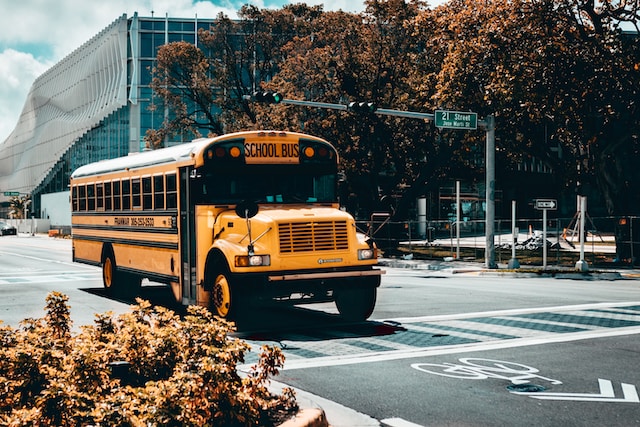The familiar yellow school bus is an iconic symbol of the American education system. For generations, it has been the trusted mode of transportation for students, getting them to and from school safely. While the benefits of school bus transportation may seem obvious, parents who are unsure of putting their children on the school bus should explore them in detail. These bright vehicles are not just a means of getting to school; they are also a symbol of community and shared experiences among students. Furthermore, this mode of transportation provides peace of mind for parents.
Table of Contents
1. Safety First
One of the primary reasons why school bus transportation remains a popular choice for parents is its exceptional safety record. Every school bus for sale is designed with safety in mind. They are equipped with numerous safety features, including high, padded seats and secure construction. The bright yellow color and flashing lights make them highly visible, reducing the risk of accidents. In addition, school bus drivers undergo rigorous training to ensure they can navigate the roads safely while ensuring the well-being of their young passengers.
2. Reliable Schedule
School buses operate on a fixed schedule, which can be a lifesaver for busy parents. Parents can rest assured that their children will be picked up and dropped off at the same time every day, allowing for better planning of their own schedules. This reliability can be especially crucial for working parents who need to coordinate their work hours with their children’s school hours. The consistency of school bus transportation can reduce stress and make daily routines more manageable. Additionally, following a structured routine fosters independence in children.
3. Reduced Traffic Congestion
One often overlooked benefit of school bus transportation is its role in reducing traffic congestion. Imagine if all the students who take the bus were driven to school individually by their parents. The roads would be flooded with cars, leading to increased traffic jams, longer commutes, and heightened pollution levels. School buses help reduce these issues by consolidating transportation for many students into a few vehicles, reducing the overall traffic load. Traffic reduction also contributes to a cleaner environment by lowering the number of vehicles emitting harmful pollutants on the roads. Moreover, it can enhance road safety by decreasing the overall volume of traffic during peak hours.
4. Social Interaction
School bus rides offer a unique opportunity for children to socialize and build relationships outside the classroom. On the bus, kids from different grades and backgrounds can interact, make friends, and learn important social skills. This socialization can contribute to a child’s overall development and help them feel more connected to their school community. It’s also a chance for parents to get to know other families in the neighborhood, fostering a sense of community. In addition, the interactions on the school bus can lead to valuable peer support networks, which can be especially beneficial during challenging times in a child’s academic journey.
5. Cost-Efficiency
For parents, school bus transportation is often a cost-effective option. Maintaining a personal vehicle for the sole purpose of taking children to school can be expensive when considering fuel, maintenance, and insurance costs. On the other hand, school bus services are typically included in school district budgets, making this mode of transportation a more economical choice. This cost savings can be significant, especially for families with multiple children. Additionally, opting for school bus transportation can reduce wear and tear on personal vehicles, potentially extending their lifespan and saving on repair and replacement expenses over time. It also aligns with environmentally conscious choices by reducing the number of individual car trips, which decreases fuel consumption and greenhouse gas emissions.
The Crucial Role of School Bus Transportation
The school bus remains an essential part of the education landscape, offering a host of benefits to both children and their parents. From safety and reliability to cost efficiency and social interaction, the advantages of school bus transportation are numerous. As neighborhoods continue to prioritize the well-being and education of children, the iconic yellow school bus will continue to play a vital role in shaping their daily lives. It’s important to recognize that the benefits extend beyond convenience, including a sense of community, reduced environmental impact, and valuable life skills development. As communities look to the future, the school bus will remain a symbol of education’s commitment to providing a safe, reliable learning experience for every child.
